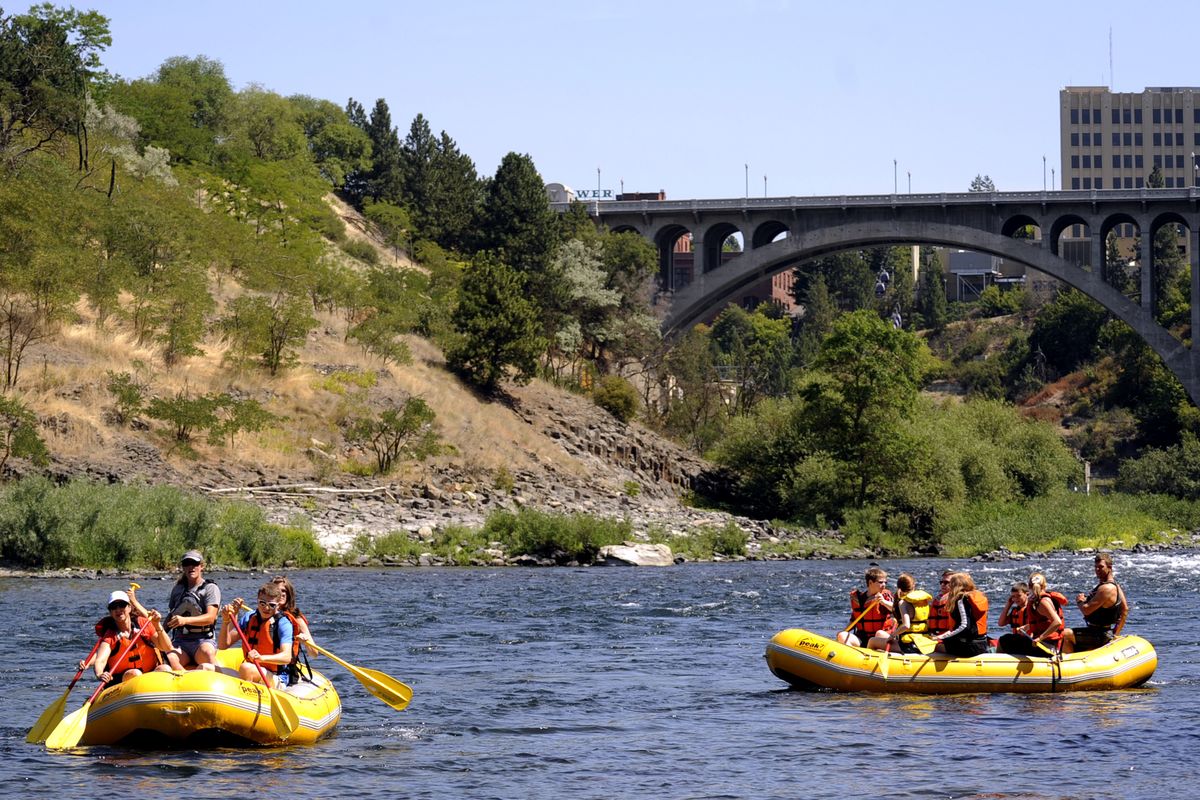Spokane River’s flow model challenged

Nearly 2,000 people wrote to the Washington Department of Ecology when the agency was developing flow rules for the Spokane River last fall.
Some discussed how Spokane’s urban river looked with varying amounts of water rushing through the channel. Many described the experience of boating, rafting or kayaking on the river at different rates of flow. But the majority also mentioned the river’s native redband trout population.
The Spokane River needs enough water to protect the redbands, a subspecies of rainbow trout, they said. Anglers prize the feisty trout, which create a popular catch-and-release fishery downstream of the Monroe Street Bridge. That’s rare in an urban setting, fly-fishers and others told the agency.
This week, the Department of Ecology adopted instream flow rules for the Spokane River that disappointed redband advocates, who say the minimum summer flows through downtown are too low for fish.
Al Scholz, an Eastern Washington University fisheries professor, has raised questions about the generic computer model that the flows were based on, given the Spokane River’s unique features. State officials acknowledged flaws in the model, which wasn’t designed for large rivers, but said the adopted flows are legally defensible and “reasonably protective” of fish.
“There was a lot of negotiation that went into this,” said Hal Beecher, the state’s instream flow biologist. “There were people who wanted higher flows and lower flows. We used the best data we had.”
Minimum flow rules aim to keep water in rivers, benefiting fish and wildlife, preserving aesthetic views and allowing for recreation and navigation. The new rules don’t guarantee that flows in the Spokane River won’t drop below the minimum levels, said Brook Beeler, an Ecology Department spokeswoman. But they’ll help the agency determine whether the river and its connected aquifer have enough water to allow future withdrawals through new water rights. The department has a backlog of applications.
In addition, the flow rules won’t affect existing water rights. Those permit holders continue to take the water they’re entitled to, Beeler said.
The state adopted minimum flows for the Spokane River that peak at 6,500 cubic feet of water per second flowing through downtown in the late spring, and taper to 850 cubic feet per second in the summer.
The controversy is about whether the summer flows will protect redband trout, whose population is estimated at about 1,250 fish between the Monroe Street and T.J. Meenach bridges.
Scholz, local tribes and environmental groups pressed for a minimum flow through downtown of 1,000 cubic feet of water per second, which is equivalent to 7,500 gallons per second.
Given uncertainties in the computer modeling, Scholz said, “I’d err on the side of caution.” The model used generic information about the current, water temperature and water depth that rainbow trout prefer across their range, instead of specific information from the Spokane River’s genetically distinct redband trout.
“The problem I have with that technique is that the Spokane River is pretty unique” in its habitat, Scholz said. “It’s got a lot of bedrock, and probably less spawning gravels than other rivers.”
Historic river flows also support the case for more water in the river, he said. Before 1900, low summer flows through downtown were between 1,300 and 2,600 cubic feet per second, according to government data.
Beecher, the state biologist, said the flows are intended to protect two native fish: redband trout and mountain whitefish. High spring flows were designed to keep spawning gravels from drying out. In the summer, however, the modeling showed that redband trout actually benefit from lower flows.
Warmer water increases the trout’s metabolic rate, which means they need to eat more, Beecher said. Fighting a fast current during the summer forces the fish to burn more energy.
But the computer model has limitations, Beecher acknowledged. It’s most accurate in shallower streams, where the water column moves at the same speed. In larger rivers, fish might find different water velocities at different depths, which would create resting zones even at higher flows.
“We do have this uncertainty about our modeling when we get to big rivers,” Beecher said. “Quite likely, there were higher summer flows in Spokane River in the past. But what the effect was on fish, we don’t know.”
He said the flow model used by the state is the best currently available.
Scholz said he supports the state’s decision to adopt flow rules for the Spokane River, even if he disagrees on the numbers.
During dry summers, when heavy pumping occurs in the Spokane Valley/Rathdrum Prairie Aquifer, river flows can shrink to 500 cubic feet per second by late August. Scholz said the flow rule will help protect remaining water in the river.
The Spokane Riverkeeper organization also hoped to see the state set summer flows closer to historic levels. “We know we had robust fisheries at that time,” said Jerry White Jr., the riverkeeper.
However, “I respect the state and give them kudos for looking at fisheries” in setting the flow rules, he added.
White said he hopes the flow rules are the beginning of community conversations about water conservation, good stewardship and the value of strong flows in the river.